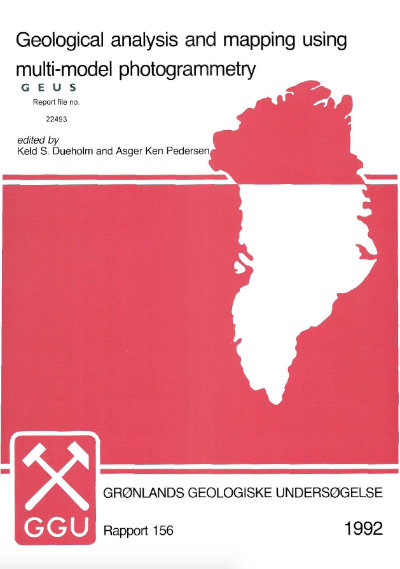Close-range geological photogrammetry studies: field and laboratory procedures with examples from prograde granulite facies orthogneisses, Kerala, South India
DOI:
https://doi.org/10.34194/rapggu.v156.8192Abstract
Precambrian orthogneisses exposed in quarries in the Palghat Gap, KeraIa, South India, were photographed for use in geological photogrammetry studies with a 35 mm (small frame) hand-held camera. Local ground control was provided by simple means: hand level, geological compass and 2 m rule. The practical procedure of photography and acquisition of ground control data is described. The stereoscopic photographs, which show complicated field relations in gneisses with prograde, transitional amphibolite to granulite metamorphic facies relations, were studied using multi-model photogrammetry (see Dueholm, 1992) and an analytical plotter. The estimated standard deviations in the stereo models of scale, azimuth and levelling were ± 2%, 2° and 5°, respectively, but the precision was very good (Iess than 1 cm). Outcrop maps were drawn with an on-line plotter at scales varying from 1:25 to 1:200 with contour intervals between 5 and 100 cm. The plot data were transferred, edited on a Macintosh computer and made ready for publication with a vector-based graphics application.
Downloads
Published
Issue
Section
License
This article is distributed under a CC-BY 4.0 licence, permitting free redistribution and reproduction for any purpose, even commercial, provided proper citation of the original work. Author(s) retain copyright over the article contents.


